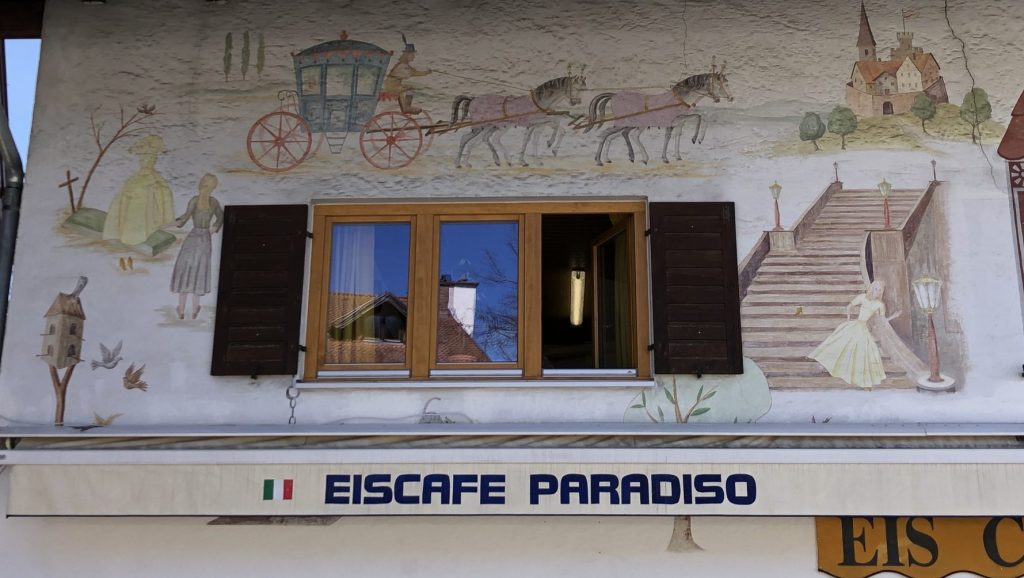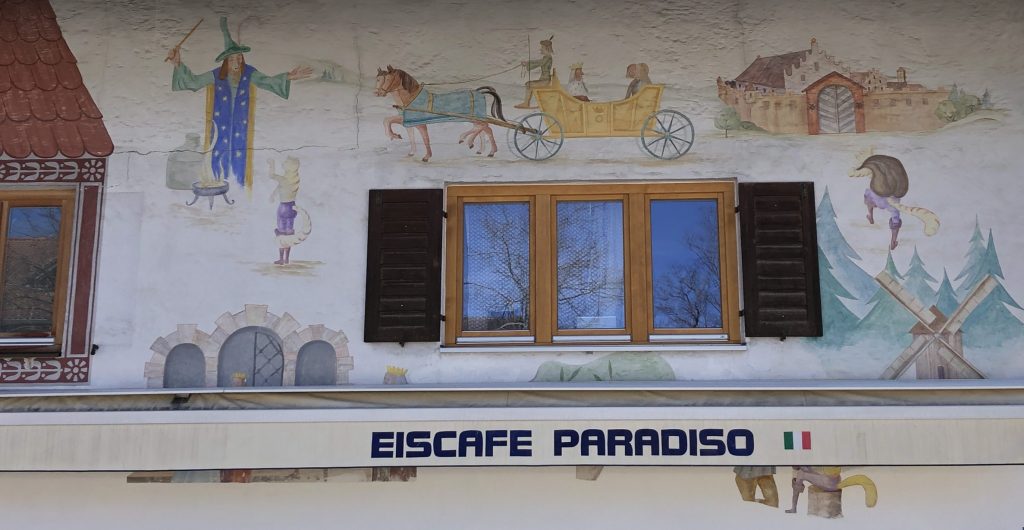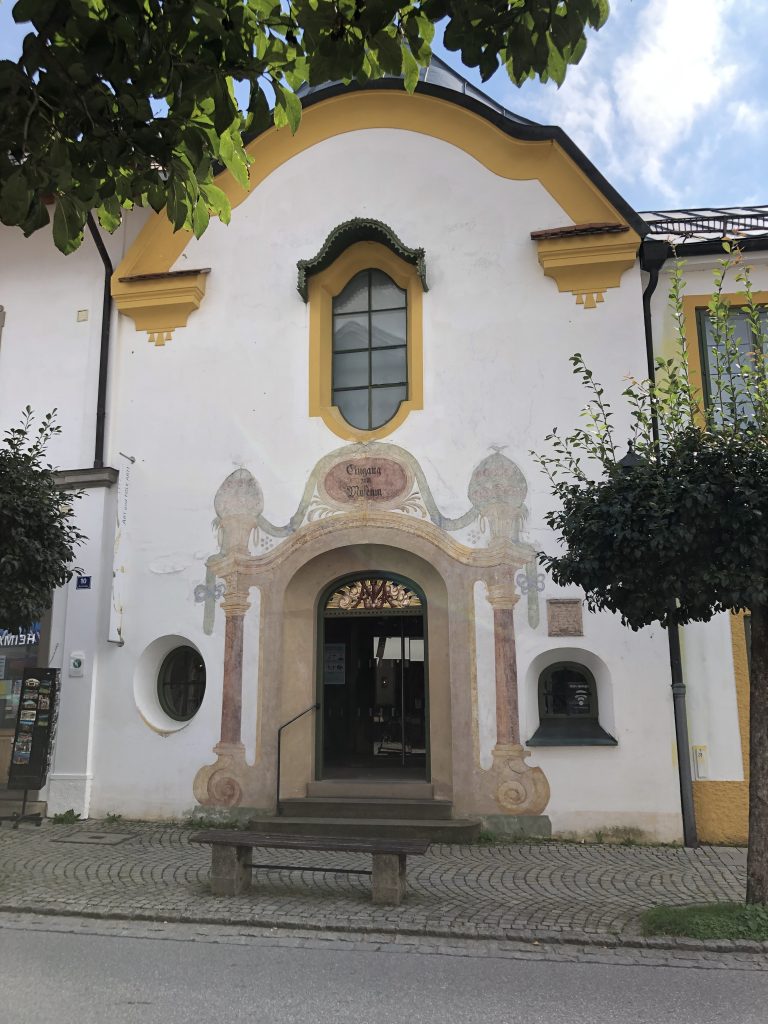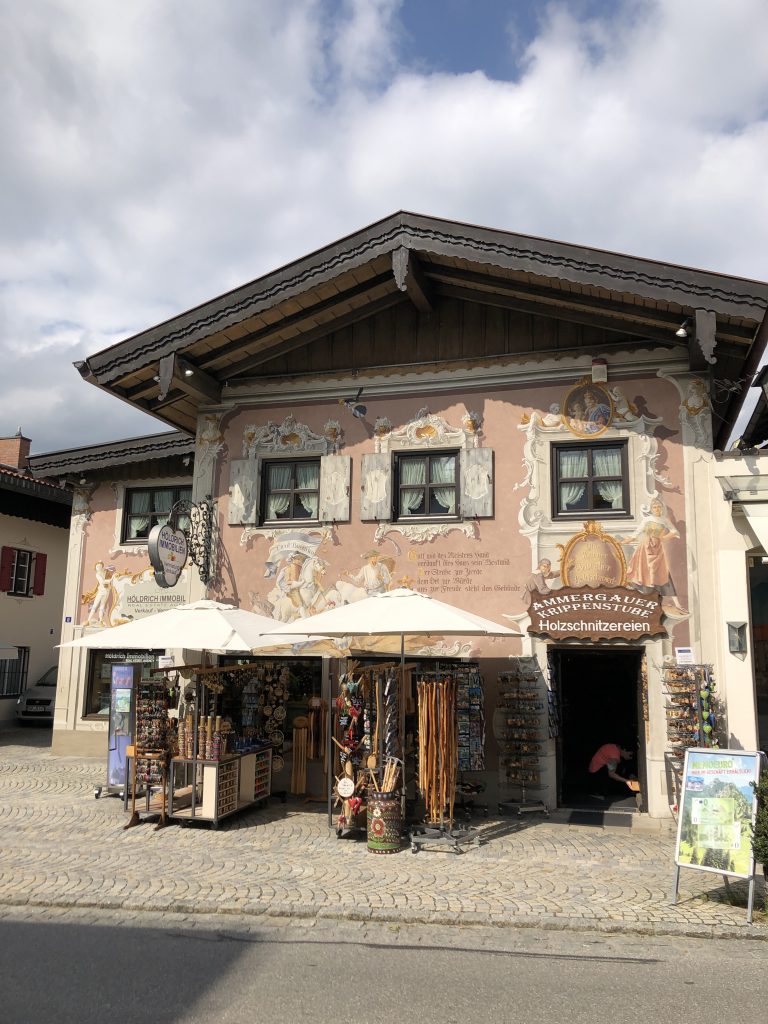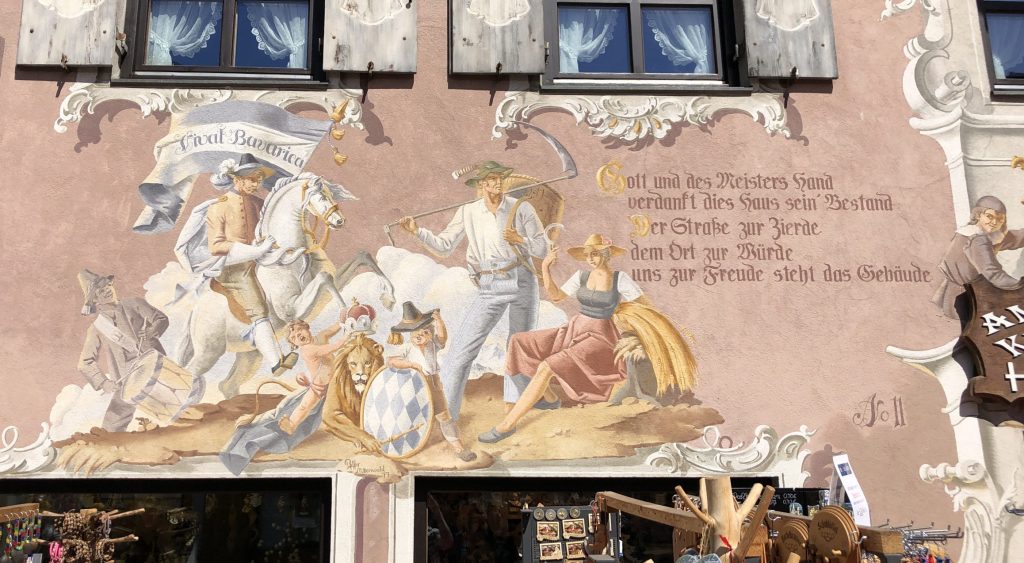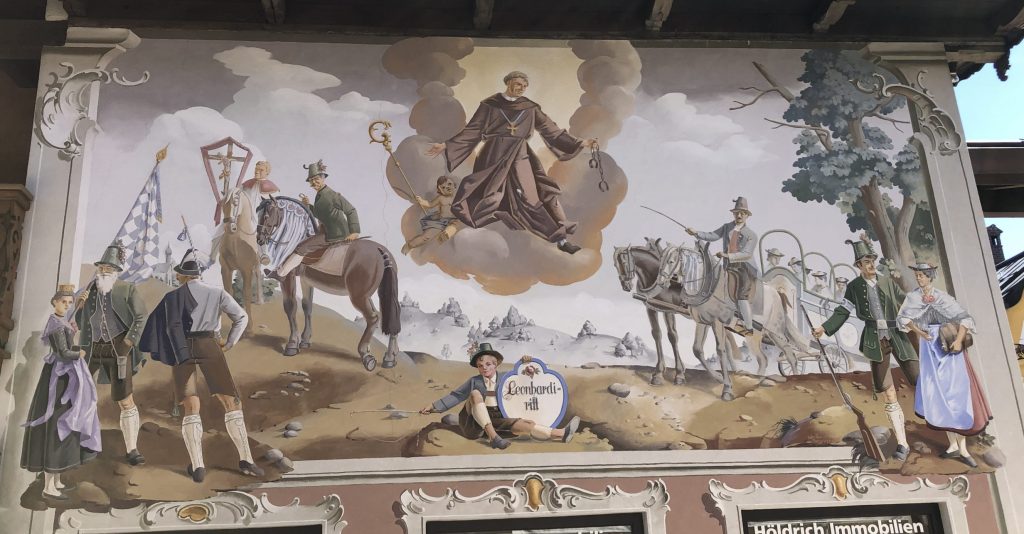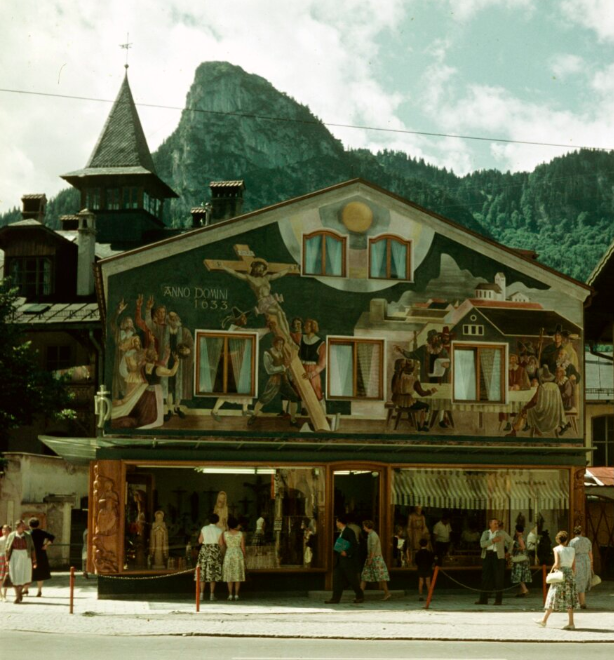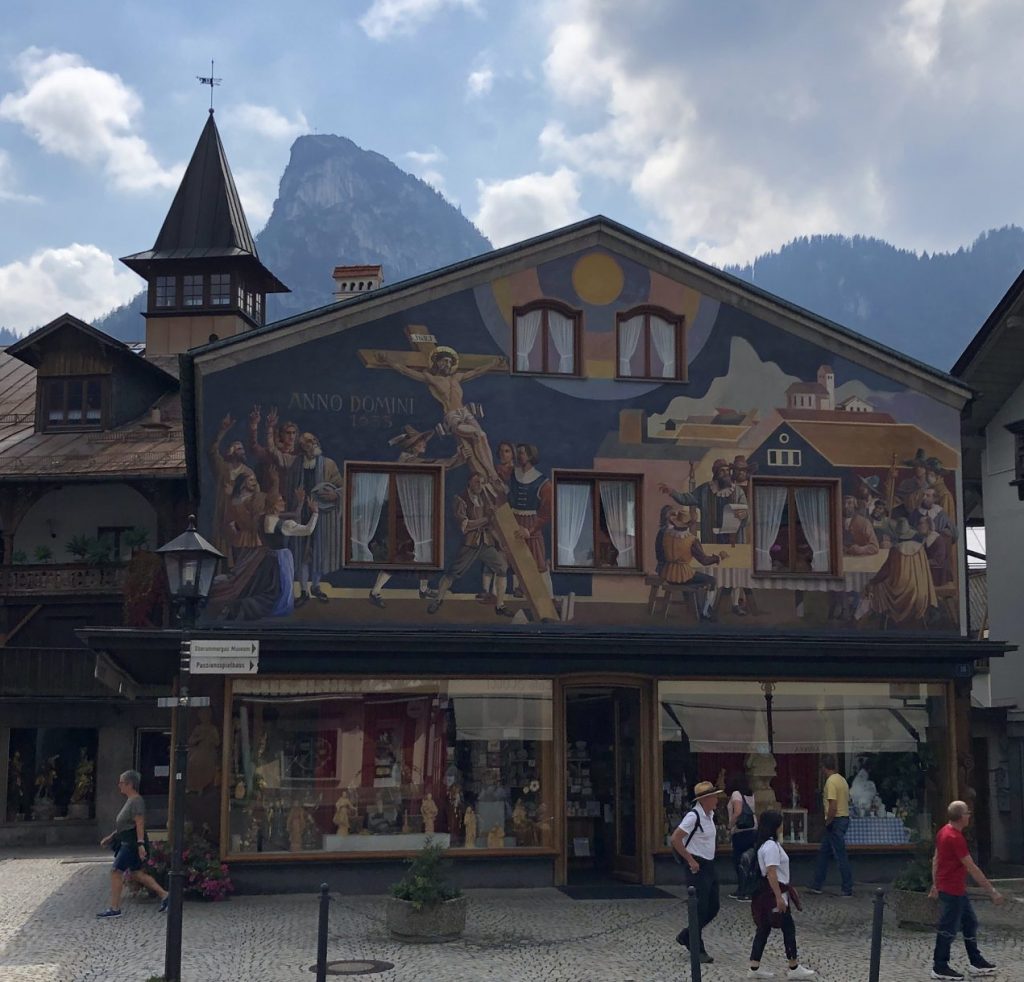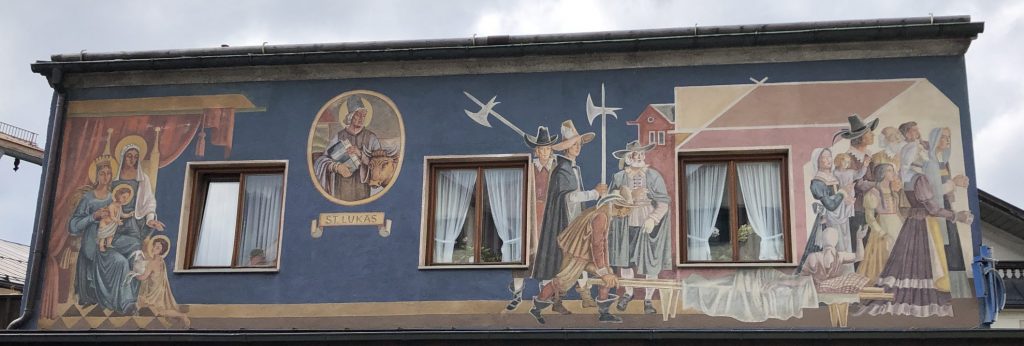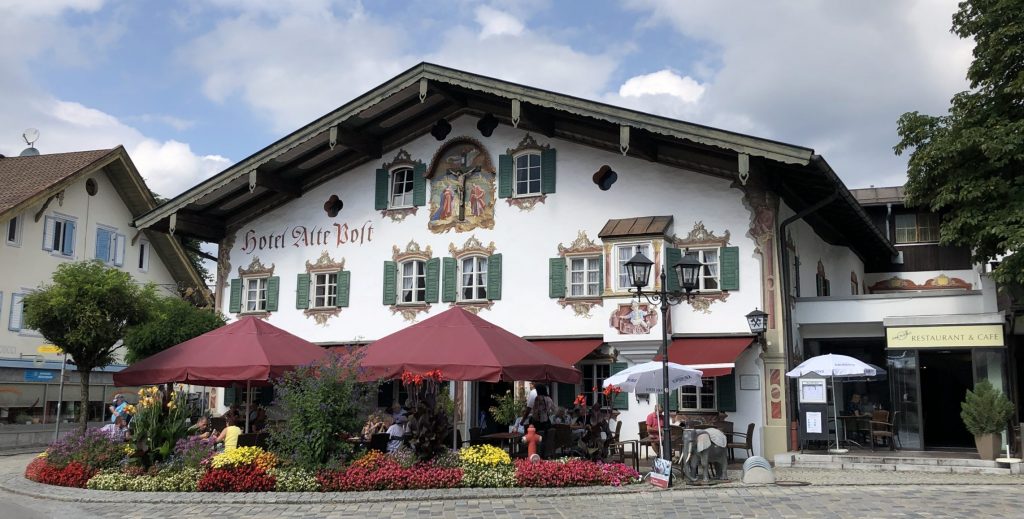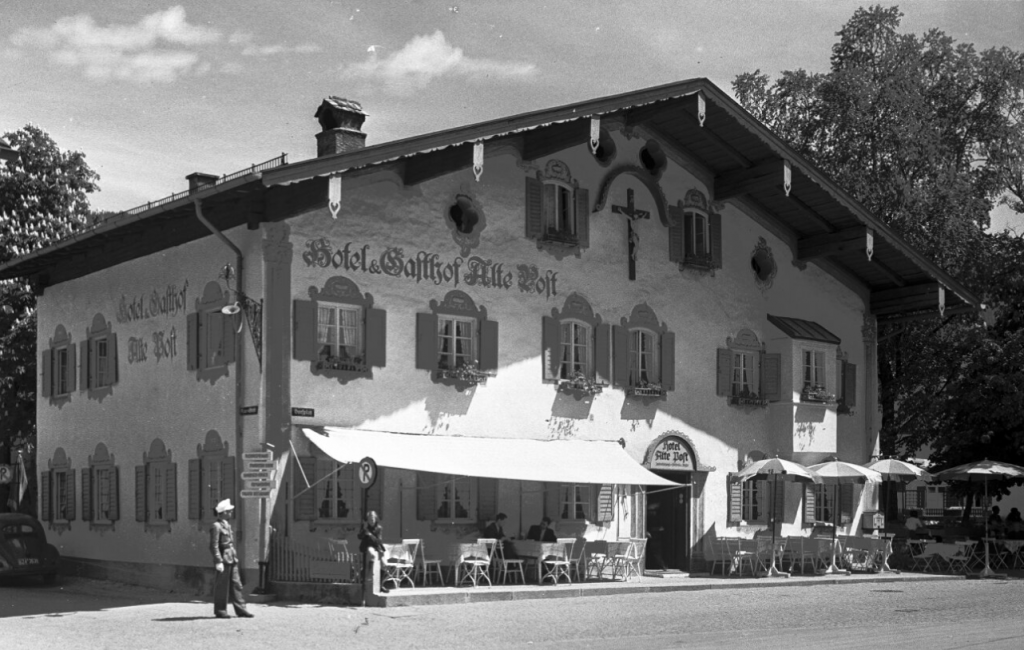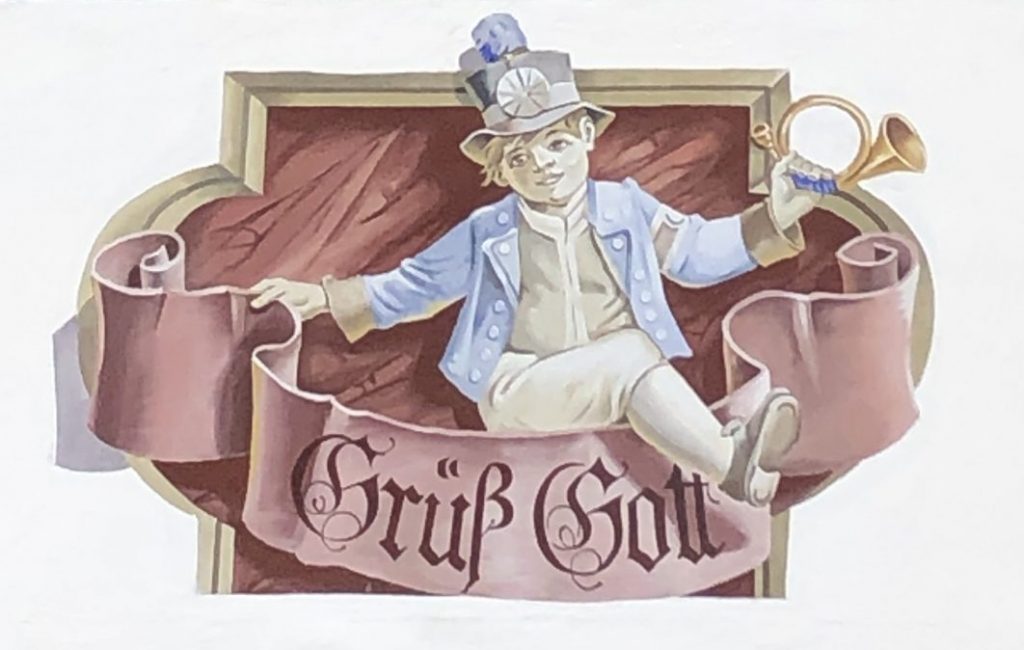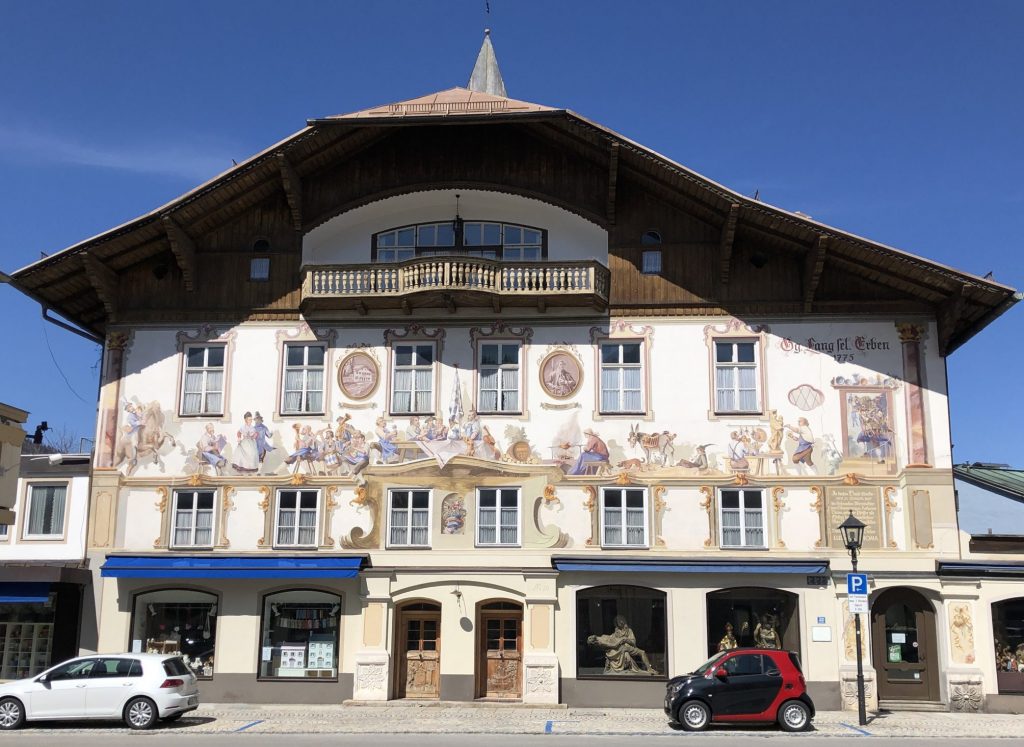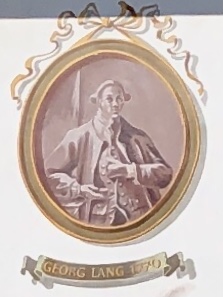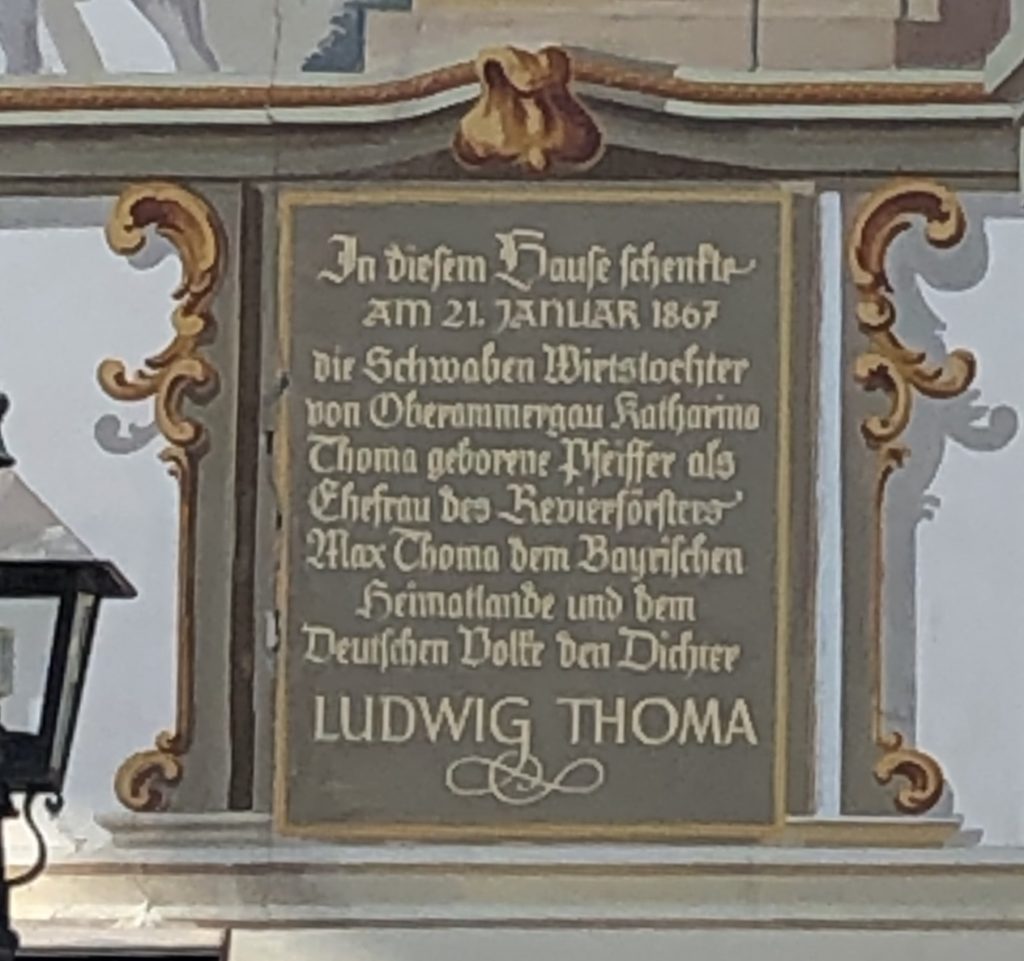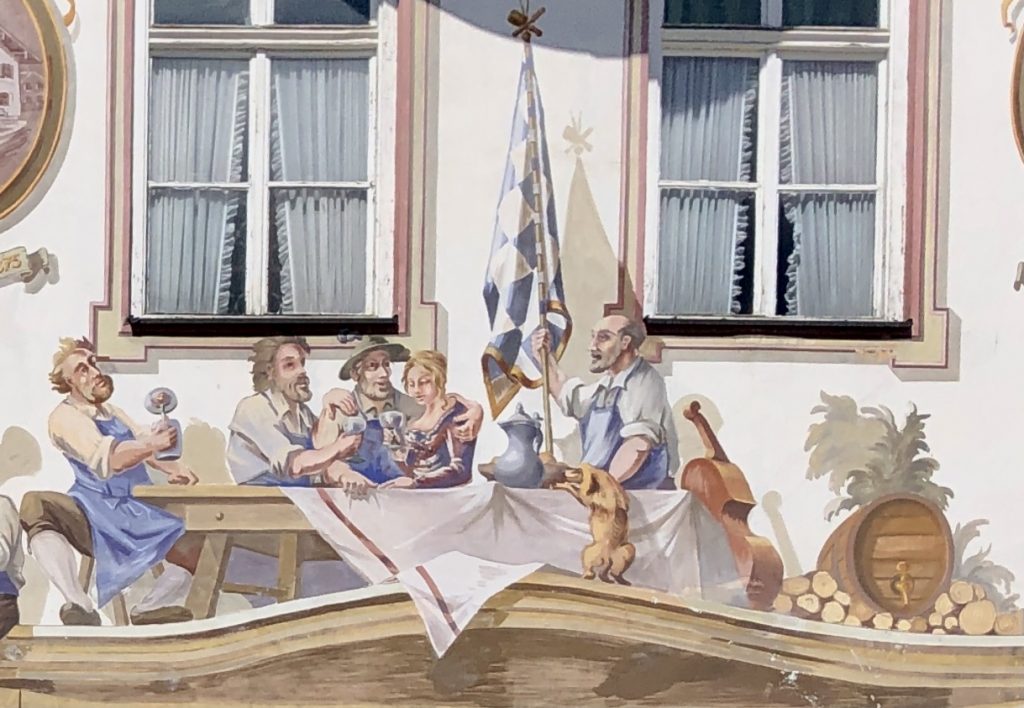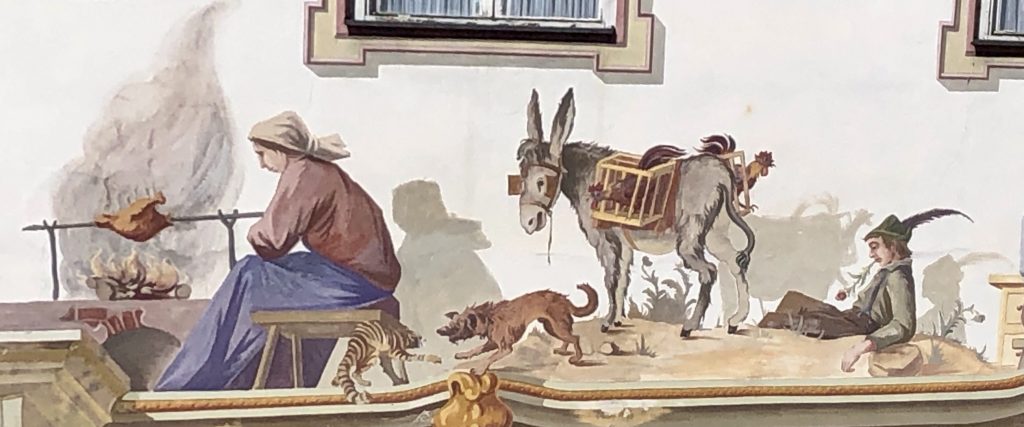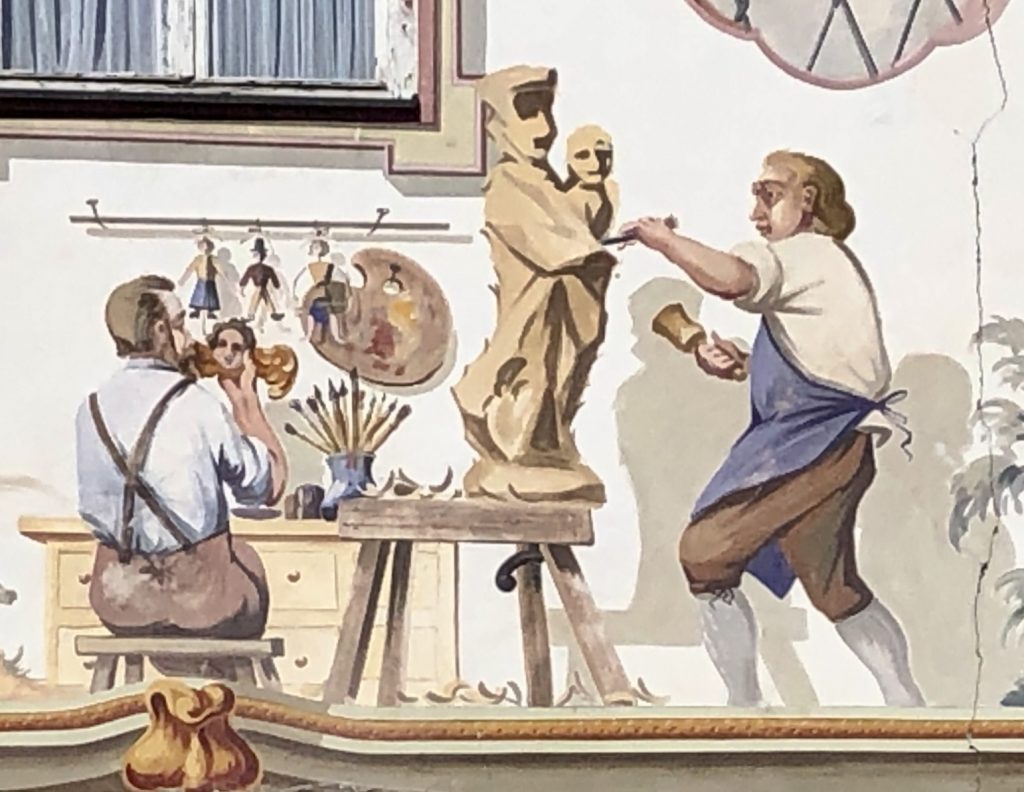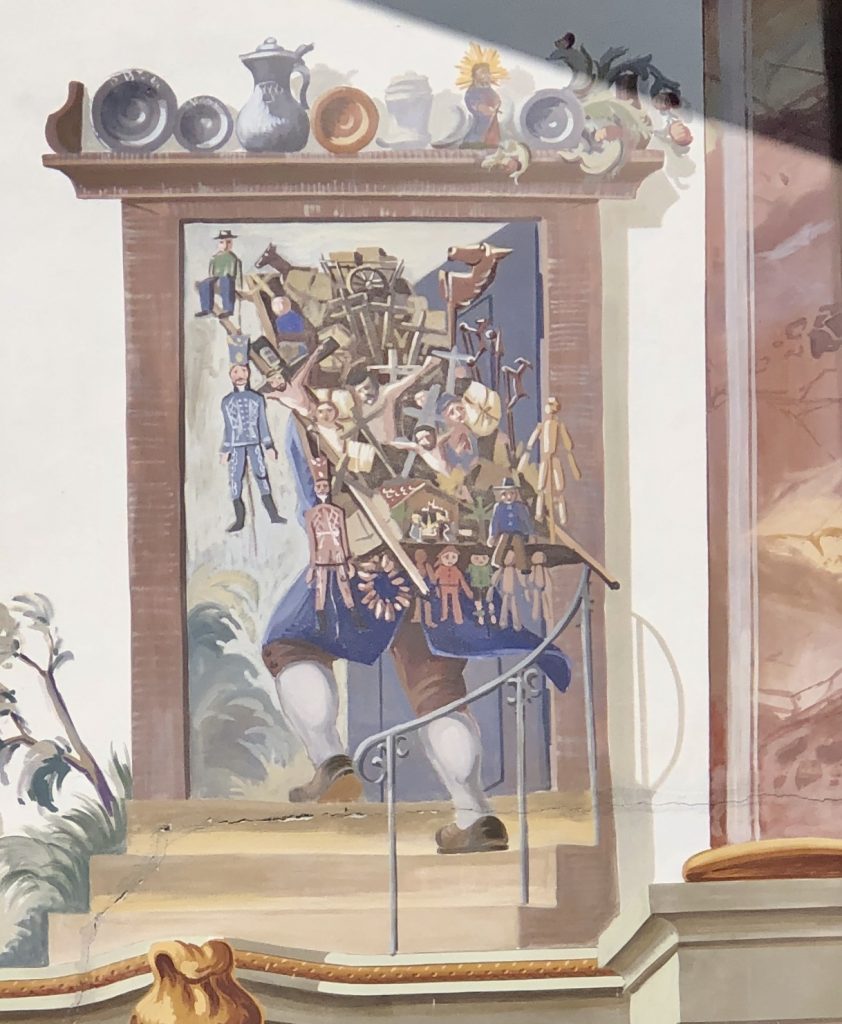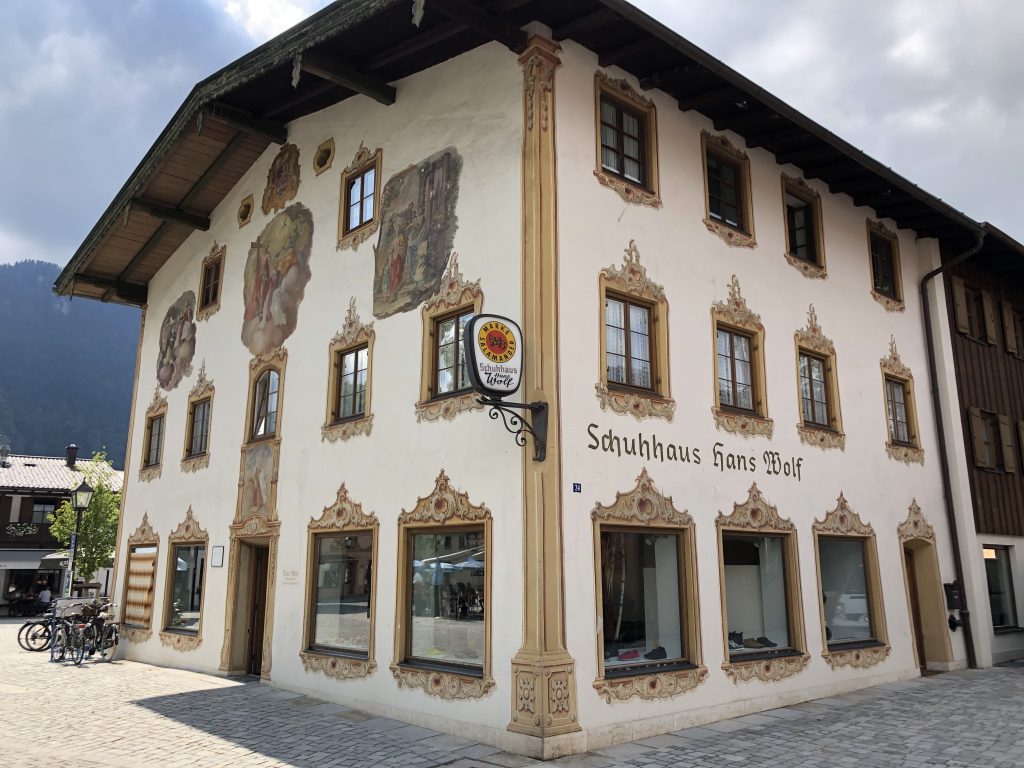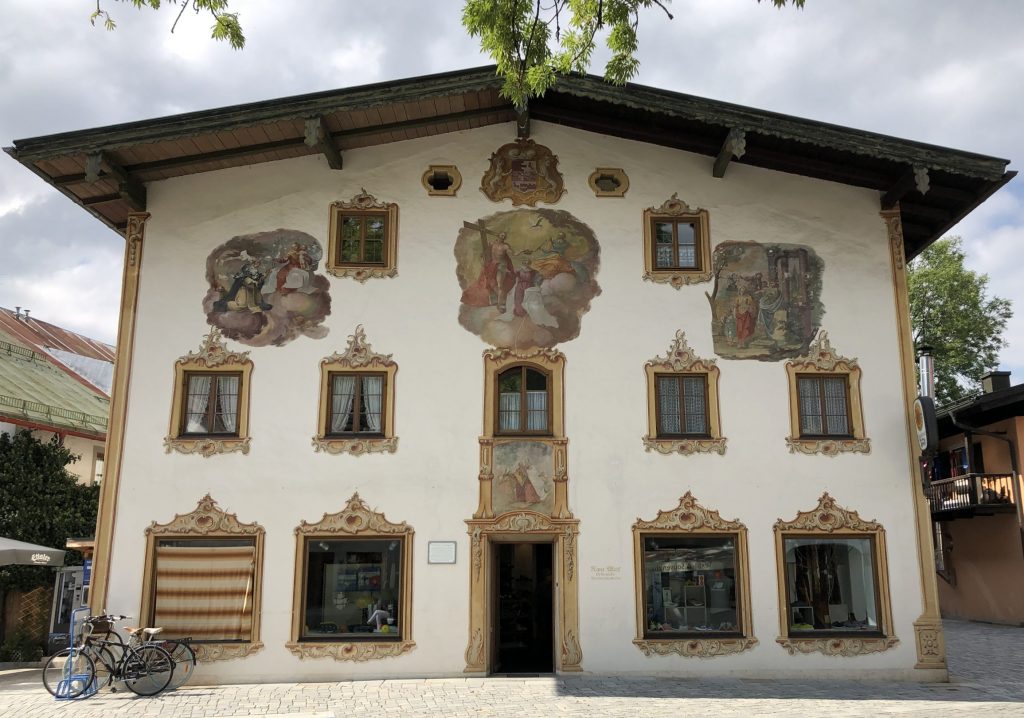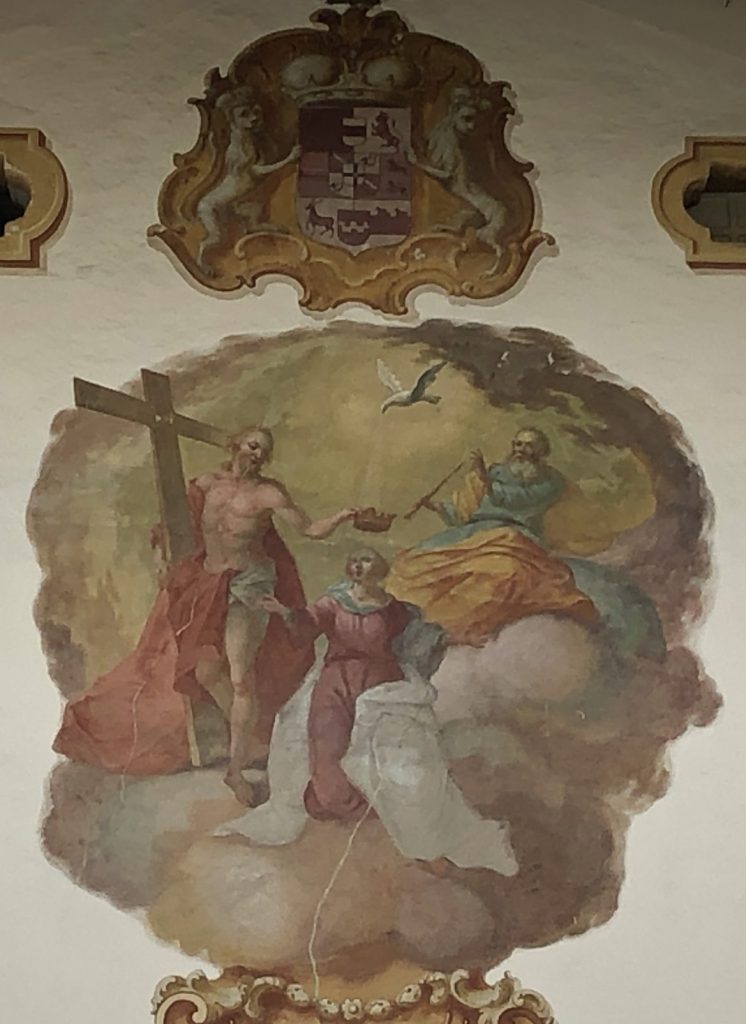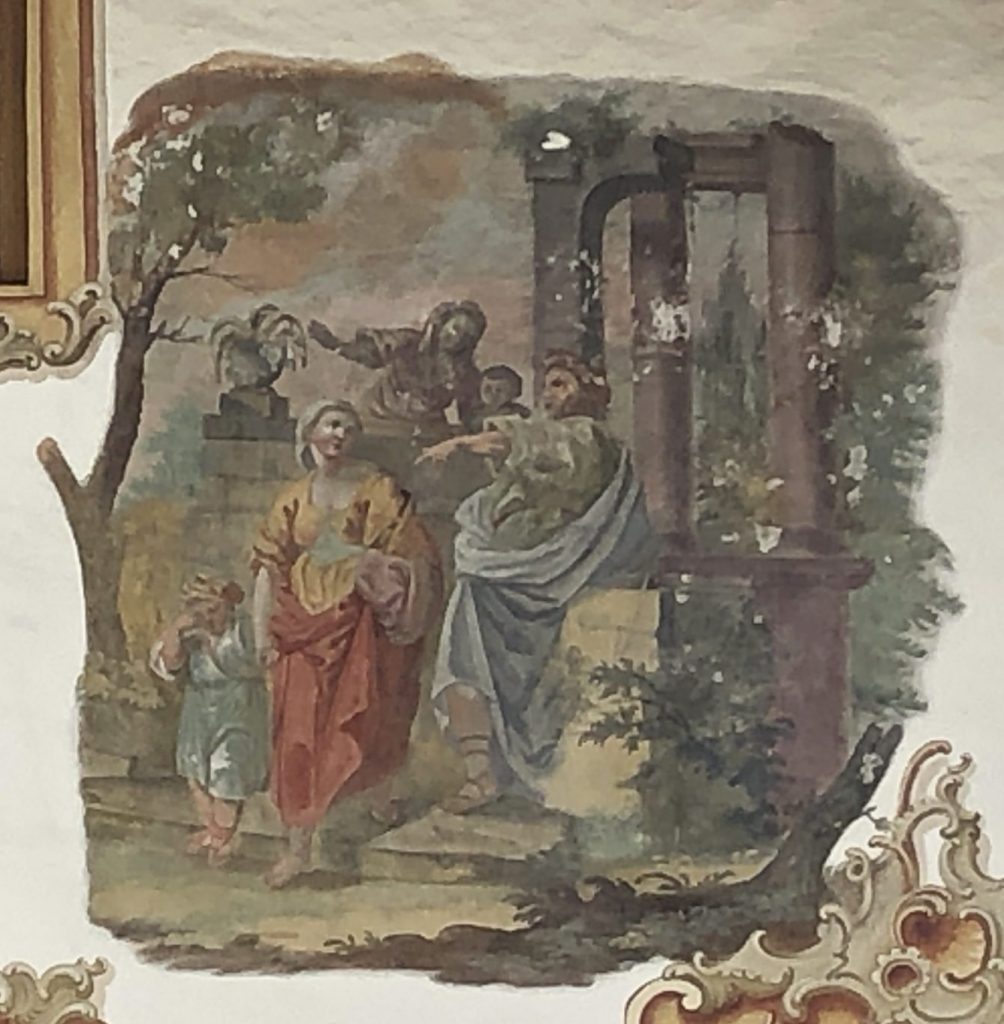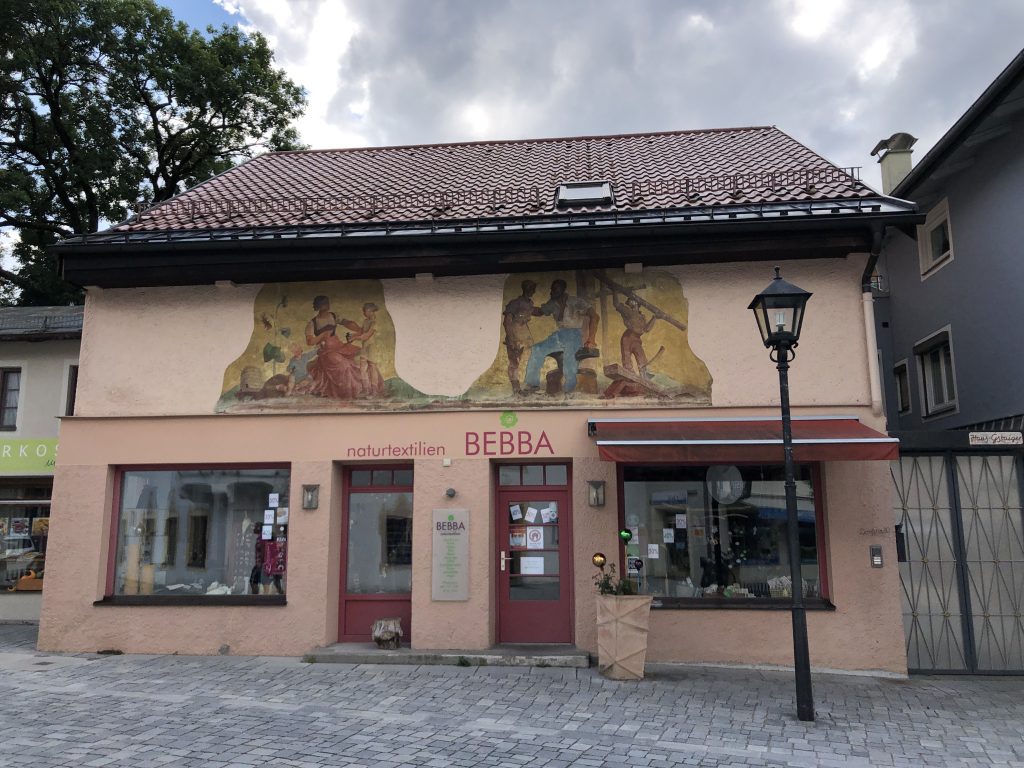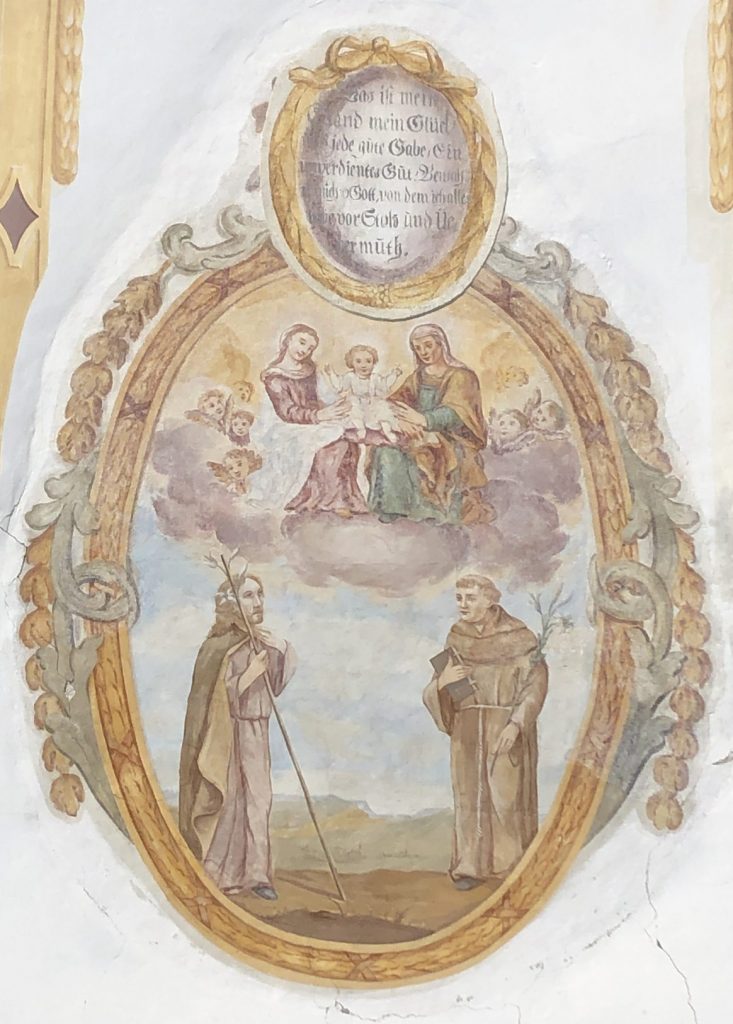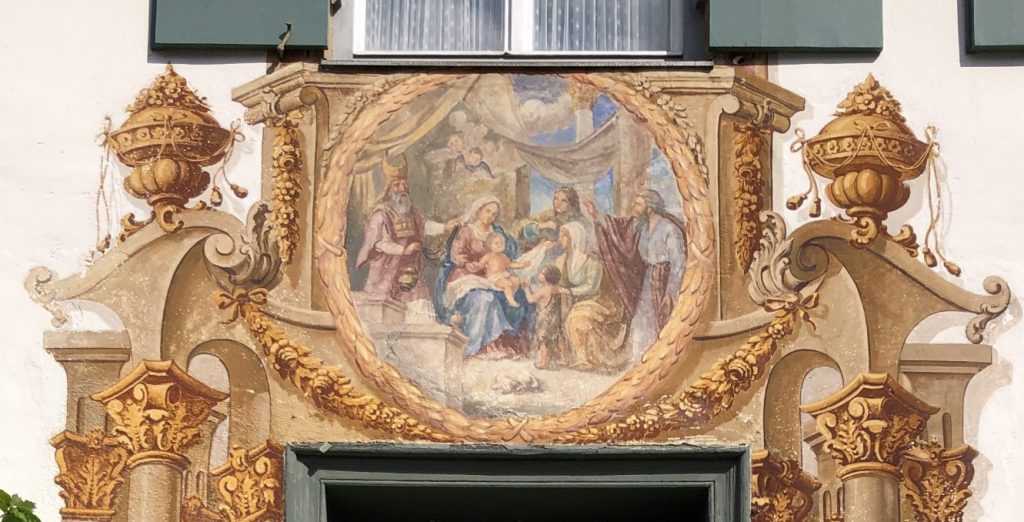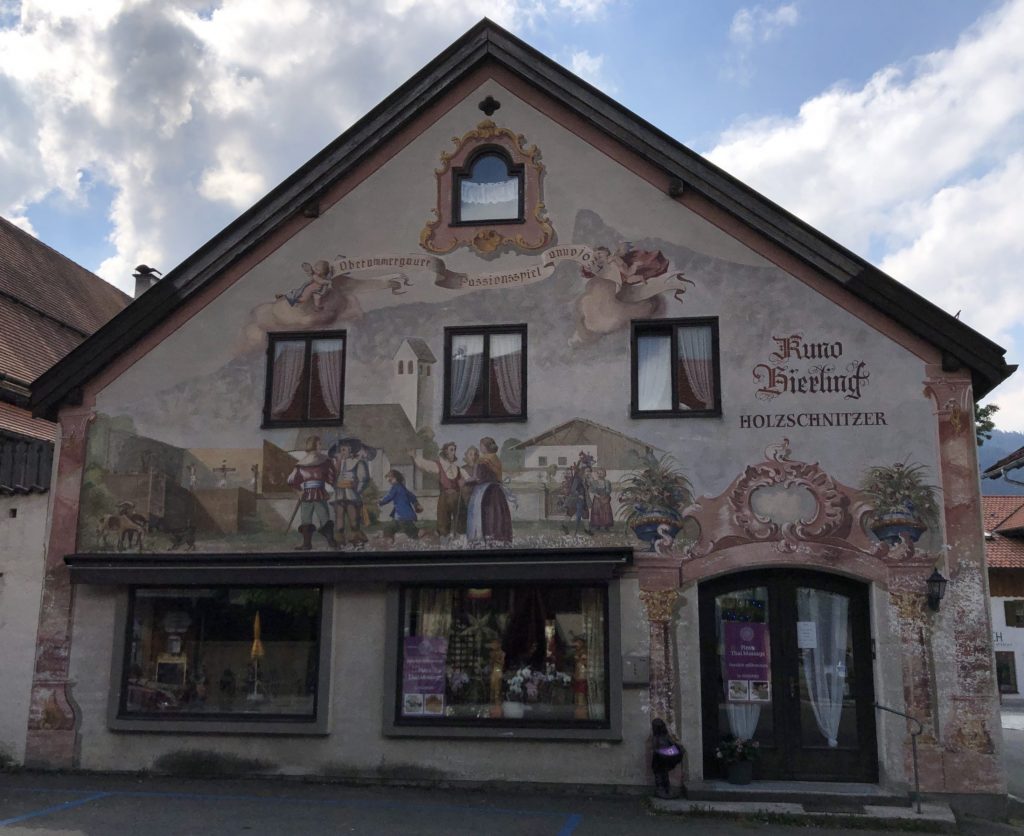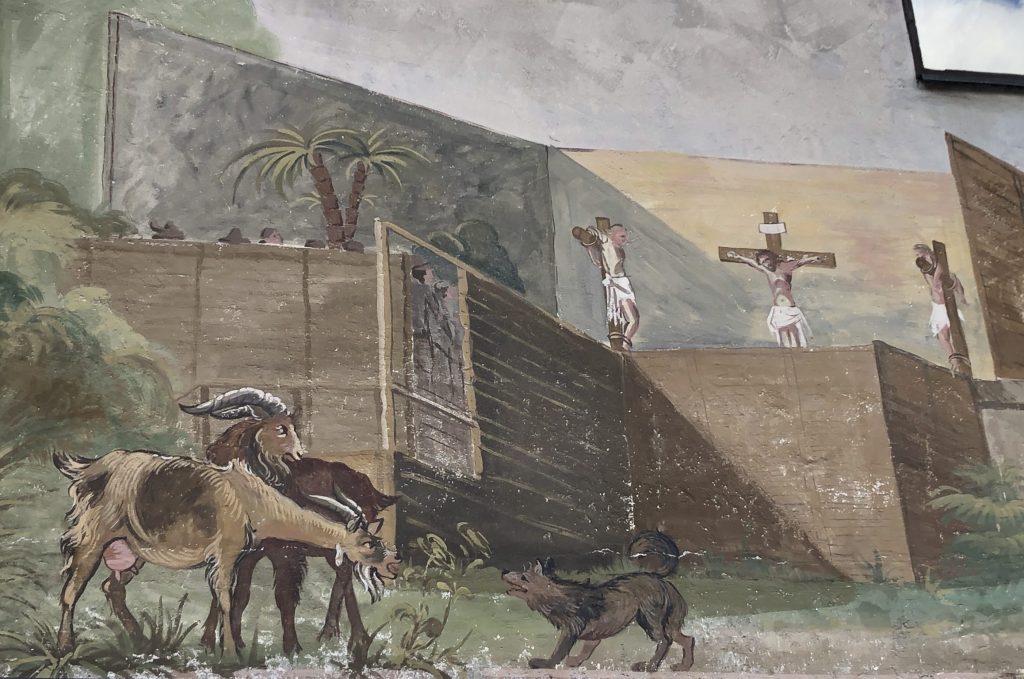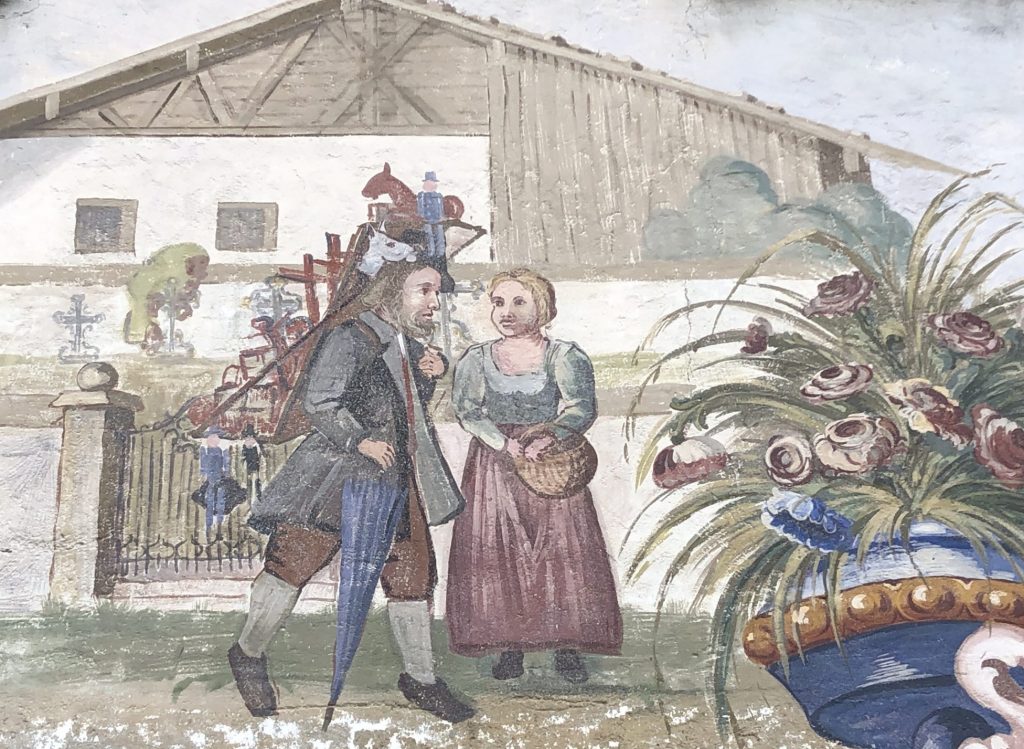- Bayerisches Landesamt für Denkmalpflege. Denkmalliste, Gemeinde Oberammergau. 26 March 2021, https://www.geodaten.bayern.de/denkmal_static_data/externe_denkmalliste/pdf/denkmalliste_merge_180125.pdf, p. 1: "Dorfstraße 8. Heimatmuseum mit sog. Hauskapelle, zweigeschossiger historisierender Gruppenbau mit Altane, Zwerchhaus, Putzgliederung und Fassadenmalerei, von Franz Zell, 1905-08; mit Ausstattung."
- Walking Tour of the Star. https://www.ammergauer-alpen.de/oberammergau/en/Media/Artikel/Walking-Tour-Of-The-Star. Accessed 21 June 2021: "Walking Tour Of The Star
Every year onNew Yearâs Evelocals and guests alike make their way around Oberammergau and Ettal with a large illuminated star accompanied by singers and musicians
This tradition differs from the 'Star Singers in other towns where the singers usually move from home to home to performing songs on the eve of Epiphany, January 6th.
On the final evening of the year at 7 pm everyone gathers at the Ammergauer Haus in Oberammergau for the 'Walk Of The Star . At representative locations throughout the village the tour stops with its numerous colourful lanterns and heralds the coming new year with traditional star songs- songs whose origins date back to medieval times.
The finale at every station is the fanfare played by the band and the loud joint shout'A guat s nei s Johr (Bavarian for A happy new year)."
- Bayerisches Landesamt für Denkmalpflege. Denkmalliste, Gemeinde Oberammergau. 26 March 2021, https://www.geodaten.bayern.de/denkmal_static_data/externe_denkmalliste/pdf/denkmalliste_merge_180125.pdf, p. 2: "Dorfstraße 19. Hotel, sog. Alte Post, zweigeschossiger Flachsatteldachbau in Ecklage mit Erker, Giebelluken, Fassadenmalerei und barockem Ausleger, im Kern 1612, 18. und 19. Jh."
- Preisinger, Anton. "AW: Fragen zu den Lüftlmalereien an der Außenwand Ihres Gebäudes in Oberammergau". Message to the author. 21 April 2021. Email: "Unser Haus wurde im Jahre 1612 das erste Mal erwähnt und ist seit 1897 in Familienbesitz."
- Bayerisches Landesamt für Denkmalpflege. Denkmalliste, Gemeinde Oberammergau. 26 March 2021, https://www.geodaten.bayern.de/denkmal_static_data/externe_denkmalliste/pdf/denkmalliste_merge_180125.pdf, p. 2: "Ehem. Amtsrichterhaus, seit 1785 Verlagshaus, bis 1922 Posthalterei, dreigeschossiger stattlicher Schopfwalmdachbau in Heimatstilformen mit Giebellaube, Zwerchhaus, Belvedere-Turm und reicher Fassadenmalerei, im Kern 18. Jh., 1898 Umbau zur heutigen Größe, Malerei modern."
- Lang, Florian. "Re: Fragen zu den Lüftlmalereien an der Außenwand Ihres Gebäudes in Oberammergau". Message to the author. 29 April 2021. Email: "Der Mann mit der bayrischen Fahne ist mein Vater Richard Lang, daneben meine Mutter, sowie verschiedene Schnitzer, die damals in unseren Werkstätten gearbeitet haben und auch zusammen musiziert haben."
- Lang, Florian. "Re: Fragen zu den Lüftlmalereien an der Außenwand Ihres Gebäudes in Oberammergau". Message to the author. 29 April 2021. Email: "Die Szene in der Mitte mit den Musikanten stellt die sogenannte "Kleppermusi" dar. "Klepper" ist der Hausname unserer Familie."
- Lang, Florian. "Re: Fragen zu den Lüftlmalereien an der Außenwand Ihres Gebäudes in Oberammergau". Message to the author. 29 April 2021. Email: "Auf der ganz linken Seite ist ein Postillon dargestellt, da über 40 Jahre ein Post- und Telegraphenamt in unserem Hause war."
- Lang, Florian. "Re: Fragen zu den Lüftlmalereien an der Außenwand Ihres Gebäudes in Oberammergau". Message to the author. 29 April 2021. Email: "Ganz rechts ein sogenannter Kraxenträger und ein Bildhauer, sowie ein Fassmaler."
- Bayerisches Landesamt für Denkmalpflege. Denkmalliste, Gemeinde Oberammergau. 26 March 2021, https://www.geodaten.bayern.de/denkmal_static_data/externe_denkmalliste/pdf/denkmalliste_merge_180125.pdf, p. 2: "Dorfstraße 24. Ehem. Doppelhaus, seit 1906 Wohn- und Geschäftshaus, dreigeschossiger barocker Flachsatteldachbau mit reicher Fassadenmalerei, 1774, Fresken teilweise von Franz Seraph Zwinck 1778."
- "GEROLDHAUS „Zum Plepperla”" (Plaque on the wall of Dorfstraße 20). Oberammergau, Germany: "Nach dem Brand am 26.1.1774 errichtet der Verleger Franz Anton Rutz „Plepperle” dieses Haus. Von der Gesamtbemalung i. J. 1778 durch Franz S. Zwinck „Lüftlmaler” blieben vier Fresken, renov. 1991. Das Wappen im Giebel (ca. 1890) stammt vom Wagner Jos. Posch. Seine Hälfte erwirbt 1906 der Schumacher Alois Gerold; die jahrhundertalte Hausteilung ist beendet, der Hausname „Grötsch” erlischt. Die Familie Hans Wolf, die heute in diesem Haus lebt, sind die direkten Nachkommen des Alois Gerold."
- Baur-Heinhold, Margarete. Bemalte Fassaden. Verlag Georg DW Callwey, München, 1975, p. 99: "Oberammergau, Dorfstraße, sog. Geroldhaus. Heute verändert. Signiert in der Krönung Marie im Giebl »Franz Zwinck invenit et pinxit 1778«. Links die Überreichung des Rosenkranzes an den hl. Dominikus durch die Muttergottes, rechts die Vertreibung der Hager mit ihrem Sohn Ismael[...]. Über der Türe Flucht nach Ägypten."
- Bayerisches Landesamt für Denkmalpflege. Denkmalliste, Gemeinde Oberammergau. 26 March 2021, https://www.geodaten.bayern.de/denkmal_static_data/externe_denkmalliste/pdf/denkmalliste_merge_180125.pdf, p. 2: "Dorfstraße 43. Wohnhaus, zweigeschossiger Satteldachbau in Ecklage mit Kniestock, Giebellaube, Zwerchhaus und Fassadenmalerei, im Kern 18. Jh., um 1900 aufgestockt, überarbeitete Malerei von Franz Seraph Zwinck um 1780."
- Bayerisches Landesamt für Denkmalpflege. Denkmalliste, Gemeinde Oberammergau. 26 March 2021, https://www.geodaten.bayern.de/denkmal_static_data/externe_denkmalliste/pdf/denkmalliste_merge_180125.pdf, p. 2: "Dorfstraße 45. Ehem. Pfarrhaus, jetzt Café, zweigeschossiger Steildachbau, von Joseph Schmuzer, 1731, Umbau 1877 und 1963."
Lüftlmalerei
A street by street guide to the fresco and facade paintings in the Garmisch-Partenkirchen district
